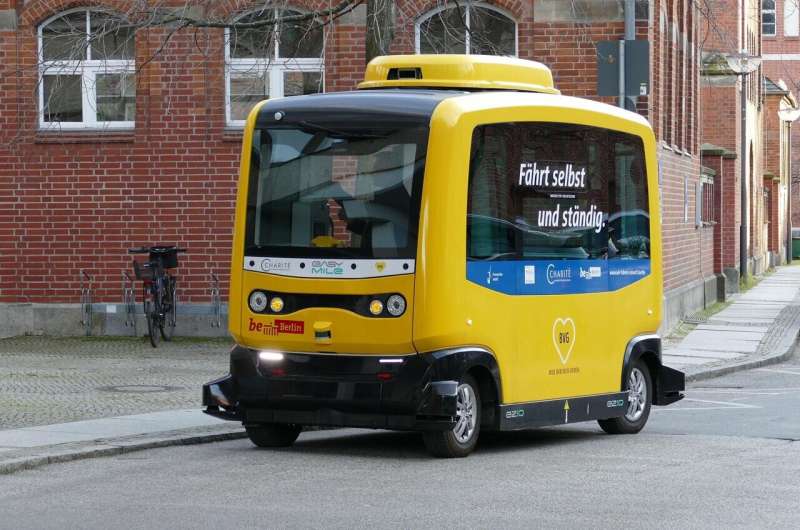Technology helps self-driving cars learn from their own memories
[ad_1]

An autonomous auto is in a position to navigate city streets and other less-fast paced environments by recognizing pedestrians, other vehicles and likely road blocks through artificial intelligence. This is realized with the help of artificial neural networks, which are qualified to “see” the car’s environment, mimicking the human visible perception process.
But not like people, vehicles applying artificial neural networks have no memory of the past and are in a regular condition of seeing the world for the initially time—no make a difference how lots of times they have driven down a particular street prior to. This is specifically problematic in adverse temperature conditions, when the car cannot safely count on its sensors.
Scientists at the Cornell Ann S. Bowers University of Computing and Information Science and the University of Engineering have made three concurrent analysis papers with the purpose of overcoming this limitation by delivering the car with the capability to produce “recollections” of past activities and use them in potential navigation.
Doctoral university student Yurong You is direct creator of “HINDSIGHT is 20/20: Leveraging Earlier Traversals to Assist 3D Notion,” which You offered just about in April at ICLR 2022, the Intercontinental Conference on Finding out Representations. “Mastering representations” involves deep mastering, a variety of equipment discovering.
“The fundamental dilemma is, can we master from repeated traversals?” said senior writer Kilian Weinberger, professor of computer science in Cornell Bowers CIS. “For instance, a car or truck may blunder a weirdly formed tree for a pedestrian the initial time its laser scanner perceives it from a length, but after it is near ample, the item classification will become crystal clear. So the 2nd time you generate previous the very identical tree, even in fog or snow, you would hope that the auto has now learned to recognize it the right way.”
“In actuality, you seldom push a route for the incredibly 1st time,” said co-creator Katie Luo, a doctoral scholar in the study group. “Either you you or another person else has driven it right before not too long ago, so it appears to be only pure to obtain that knowledge and make use of it.”
Spearheaded by doctoral college student Carlos Diaz-Ruiz, the group compiled a dataset by driving a automobile equipped with LiDAR (Light-weight Detection and Ranging) sensors repeatedly together a 15-kilometer loop in and about Ithaca, 40 instances more than an 18-month interval. The traversals capture various environments (highway, urban, campus), weather situations (sunny, rainy, snowy) and moments of working day.
This ensuing dataset—which the group refers to as Ithaca365, and which is the matter of one particular of the other two papers—has extra than 600,000 scenes.
“It deliberately exposes a single of the vital problems in self-driving autos: inadequate weather conditions ailments,” explained Diaz-Ruiz, a co-creator of the Ithaca365 paper. “If the road is lined by snow, humans can depend on recollections, but devoid of memories a neural network is intensely deprived.”
HINDSIGHT is an technique that uses neural networks to compute descriptors of objects as the auto passes them. It then compresses these descriptions, which the team has dubbed SQuaSH (Spatial-Quantized Sparse Heritage) options, and outlets them on a virtual map, related to a “memory” saved in a human brain.
The subsequent time the self-driving automobile traverses the exact same area, it can question the community SQuaSH database of each and every LiDAR position alongside the route and “remember” what it uncovered past time. The database is consistently up-to-date and shared throughout autos, as a result enriching the information and facts accessible to complete recognition.
“This data can be additional as attributes to any LiDAR-based 3D item detector” You reported. “The two the detector and the SQuaSH representation can be trained jointly devoid of any more supervision, or human annotation, which is time- and labor-intense.”
Although HINDSIGHT nonetheless assumes that the synthetic neural network is now educated to detect objects and augments it with the functionality to generate recollections, MODEST (Cellular Object Detection with Ephemerality and Self-Coaching)—the subject of the 3rd publication—goes even even more.
Listed here, the authors let the car study the complete notion pipeline from scratch. Initially the artificial neural community in the auto has under no circumstances been uncovered to any objects or streets at all. By multiple traversals of the identical route, it can study what pieces of the ecosystem are stationary and which are moving objects. Slowly but surely it teaches by itself what constitutes other targeted visitors participants and what is safe and sound to disregard.
The algorithm can then detect these objects reliably—even on roads that were not aspect of the original repeated traversals.
The scientists hope that equally ways could drastically reduce the growth price of autonomous cars (which presently still relies heavily on high priced human annotated data) and make this sort of autos a lot more efficient by studying to navigate the destinations in which they are employed the most.
The two Ithaca365 and MODEST will be offered at the Proceedings of the IEEE Conference on Pc Vision and Pattern Recognition (CVPR 2022), to be held June 19-24 in New Orleans.
Other contributors include things like Mark Campbell, the John A. Mellowes ’60 Professor in Mechanical Engineering in the Sibley College of Mechanical and Aerospace Engineering, assistant professors Bharath Hariharan and Wen Sunshine, from computer science at Bowers CIS former postdoctoral researcher Wei-Lun Chao, now an assistant professor of laptop science and engineering at Ohio State and doctoral college students Cheng Perng Phoo, Xiangyu Chen and Junan Chen.
New way to ‘see’ objects accelerates long term of self-driving vehicles
Convention: cvpr2022.thecvf.com/
Quotation:
Technological know-how helps self-driving automobiles master from their personal reminiscences (2022, June 21)
retrieved 25 June 2022
from https://techxplore.com/information/2022-06-know-how-self-driving-vehicles-recollections.html
This doc is subject to copyright. Apart from any fair working for the purpose of non-public study or research, no
aspect may be reproduced with out the written authorization. The content material is provided for information purposes only.
[ad_2]
Supply link







